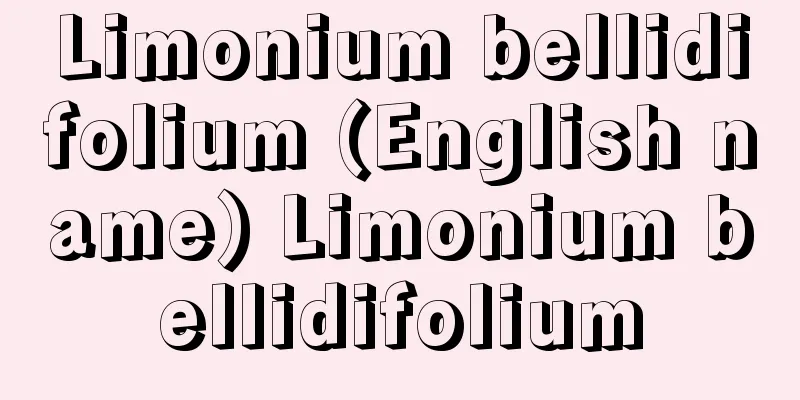Kano Tan'yu

|
Year of death: Enpo 2.10.7 (1674.11.4) Year of birth: January 14, 1602 (March 7, 1602) A painter of the early Edo period. Born in Yamashiro Province (Kyoto Prefecture) as the eldest son of Kano Takanobu. His name was Saime, and later Morinobu. He also went by the pen names Tan'yūsai, Seimei, and Byakurenshi. In 1605 (Keichō 10), at the age of four, he picked up a brush and painted, showing his skill. In the spring of 1606, he painted "The Porgy of the Mountains and Fields" and asked Kogetsu Sogan for his praise. The following year, he went to Sunpu (Shizuoka Prefecture) to have an audience with Tokugawa Ieyasu, and then went to Edo to have an audience with Tokugawa Hidetada. In 1619, he wrote a piece in front of Shogun Hidetada, and was praised as a reincarnation of his grandfather Eitoku. In 1617 (Genna 3), he was summoned to Edo and became an official painter for the shogunate. In 1620, he painted the Sannoma screen of the Empress's audience hall. In 1621, he was bestowed with a 33,000m2 mansion outside the Kajibashi Gate. In 1626, he handed over the head of the Kano family to his younger brother Yasunobu. In 1626, he directed the creation of the Nijo Castle wall paintings (still extant) and completed them. In 1627, he completed the creation of the Osaka Castle wall paintings. In 1628, he worked on the paintings for the mausoleum of Tokugawa Hidetada. In August 1630, he was ordered to create the wall paintings for the Honmaru of Nagoya Castle (still extant). The works that have been handed down today are important as they convey the establishment of the Edo Kano style. In 1631, he was given the name Tan'yūsai by Kogetsu Sogan and adopted his disciple Masunobu, giving him the name Saijo. On December 29, 1640, he was appointed as a Hokan. In 1641, he donated the "Toshogu Engi Emaki" (stored at Nikko Toshogu Shrine). In 1642, he created the wall paintings for the Hojo of Daitokuji Temple (still extant). This is a valuable relic in which all the patterns of Tan'yū's ink-wash wall paintings can be seen. In 1647, he created the wall paintings for Edo Castle. In 1650, together with Tawaraya Sosetsu, he painted "Golden and Green Flowers" for the Edo residence of Maeda Toshiharu, lord of Daishoji Domain, a branch domain of Kaga. Tan'yū's house was destroyed in a great fire in 1656. On May 29, 1662, he was appointed as a Hoin, the highest rank available to a painter. Four years later, he was involved in the creation of a longevity portrait of Emperor Mizuo, and was bestowed the seal of "Hitsumine Daikoji" by the Emperor. In the same year, he was given a fief of 200 koku in Kawachi Province in exchange for his monthly salary. He fell ill with cold for the remainder of the decade, recovered the following year, but died in Edo a few years later. His grave is at Ikegami Honmonji Temple. Tan'yū's contributions to the founding of the Edo Kano school style were significant, and in recent years the vast number of miniatures he left behind have been reevaluated from the perspective of research into ancient paintings. In addition, Tan'yu's new style, which he learned from studying Yamato painting, is being reevaluated in addition to his traditional ink-wash style. <References> Tsuneo Takeda, Complete Collection of Japanese Art Paintings, Vol. 15; Motoaki Kono, Japanese Art, Vol. 194 (Shibundo) (Toshinobu Yasumura) Source: Asahi Japanese Historical Biography: Asahi Shimbun Publications Inc. About Asahi Japanese Historical Biography |
|
没年:延宝2.10.7(1674.11.4) 生年:慶長7.1.14(1602.3.7) 江戸前期の画家。狩野孝信の長男として山城国(京都府)に生まれる。名を采女,のち守信という。探幽斎,生明,白蓮子と号した。慶長10(1605)年,4歳のとき自ら筆をとって描くところ習熟者のようであったという。16年春「山野胡馬図」を描き江月宗玩に賛を求めた。翌年駿府(静岡県)に赴き徳川家康に謁し,その後江戸へ出て徳川秀忠に謁した。19年将軍秀忠の御前にて揮毫し,祖父永徳の再来と称賛された。元和3(1617)年江戸へ召され幕府御用絵師となる。 同5年,女御御対面所三之間障壁に描く。7年,鍛冶橋門外に1033坪の屋敷を拝領する。9年,弟安信に狩野宗家を譲る。寛永3(1626)年二条城障壁画(現存)制作を指揮し完成する。4年大坂城障壁画制作を終える。9年徳川秀忠霊廟の画事をなす。10年8月名古屋城本丸障壁画(現存)制作を命ぜられる。現在伝わる作品は江戸狩野様式の確立を伝えるものとして重要。12年,江月宗玩より探幽斎の号を授かり,弟子益信を養子に迎え采女の名を与える。15年12月29日法眼に叙される。17年「東照宮縁起絵巻」(日光東照宮蔵)を奉納する。18年大徳寺本坊方丈障壁画(現存)を制作。これは探幽の水墨障壁画のあらゆるパターンがみられる貴重な遺品である。正保4(1647)年,江戸城障壁画を制作。慶安3(1650)年,加賀支藩大聖寺藩主前田利治の江戸屋敷に,俵屋宗雪と共に「金碧草花図」を描く。明暦2(1656)年の大火で探幽の家も焼失する。寛文2(1662)年5月29日,画家として最高位の法印に叙される。4年後水尾法皇寿像の制作に携わり,法皇より「筆峯大居士」の印を拝領する。この年,月俸をかえて河内国に采地200石を賜る。10年中風を病み,翌年本復したが,数年後に江戸で没した。墓は池上本門寺にある。江戸狩野派様式を創始した功績は大きく,近年探幽の遺した膨大な縮図が古画研究の視点から再評価されている。またやまと絵学習による探幽の新様式も従来の探幽の水墨様式に加え再評価されつつある。<参考文献>武田恒夫『日本美術絵画全集』15巻,河野元昭『日本の美術』194巻(至文堂) (安村敏信) 出典 朝日日本歴史人物事典:(株)朝日新聞出版朝日日本歴史人物事典について 情報 |
Recommend
RCC - RCC
Resolution and Collection Corporation RCC [reinfor...
Aino Komatsu - Aino Komatsu
...In places where the two species grow together,...
Chamaeleo chamaeleon (English spelling) Chamaeleochamaeleon
...General term for reptiles belonging to the Cha...
Aleksei Silych Novikov-Priboi
1877‐1944 Soviet writer. He served as a sailor fro...
Corrasion
…The soil and sand carried by flowing water usual...
Larsa
An ancient Babylonian city located 32 km southeast...
Ujikoiri - parishioner
To become a parishioner of the village's guard...
Village-kun
It refers to a leader in fishing in a fishing vil...
Riverbank - Kashichi
A place where goods were loaded and unloaded along...
Combination Acts
[France] A law enacted by the National Assembly in...
The truth behind "She and He"
…He spent a huge amount of money and devoted hims...
Tonkura - Miyake
It refers to the land owned by the Emperor and Im...
Roundworm disease - Ascariasis
What kind of infection is it? Roundworms are worm...
Revillagigedo Island (English spelling)
…A fishing port in the southwest of Revillagigedo...
Phasianus soemmerringii soemmerringii (English spelling) Phasianussoemmerringiisoemmerringii
…[Ryozo Kakizawa]. … *Some of the terminology tha...







![Tomari [village] - Tomari](/upload/images/67cc5acf49c08.webp)

